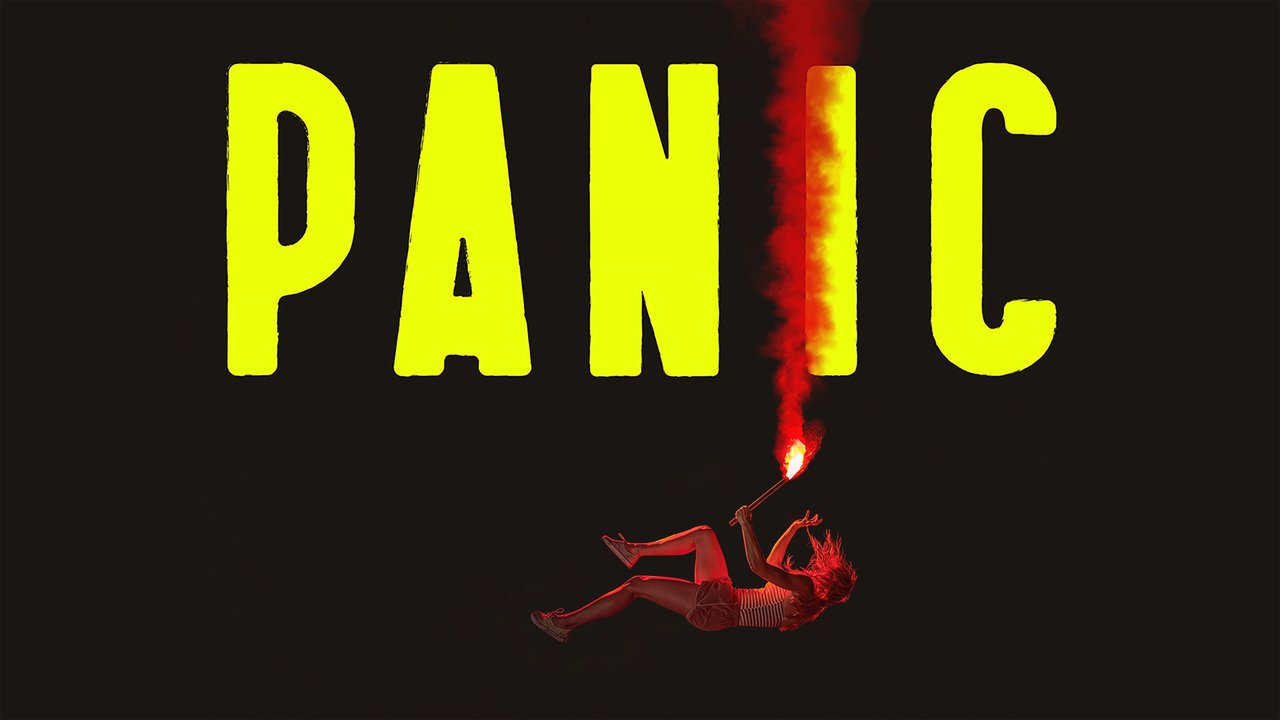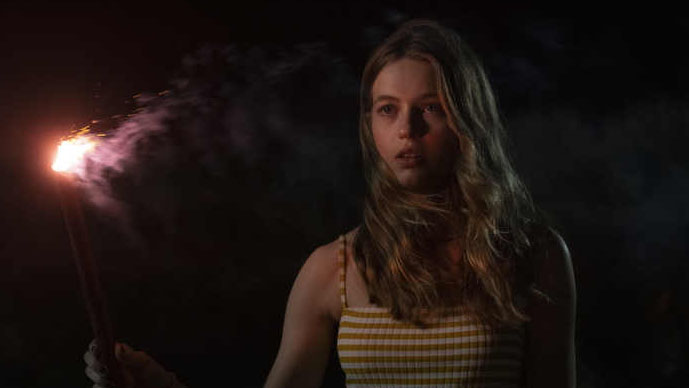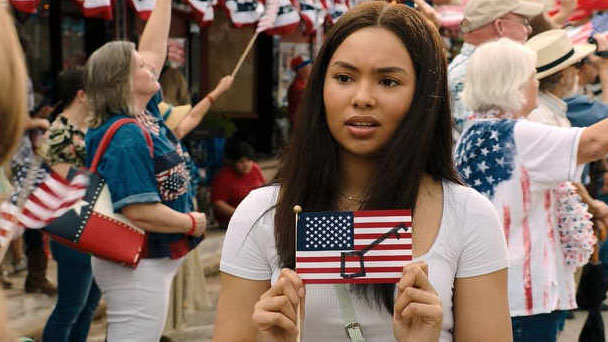
Panic on Amazon Prime is a surprisingly deceptive TV show. On the surface, the streamer’s latest young adult (YA) series, based on Lauren Oliver’s novel of the same name, appears to be nothing more than standard fare for its adolescent-targeted genre. However, dig deeper and there’s more to it than meets the eye.
Set in the fictional town of Carp, Panic stars Olivia Welch as Heather Nill, a recent college graduate who signs up to compete in Panic, the town’s annual summer-spanning competition.
With a $50,000 reward on offer, Heather and best friend Natalie (Jessica Sula) join 45 other seniors in a bid to win the big cash prize – and their freedom from their rustbelt-inspired town. To do so, contestants must navigate a series of increasingly dangerous challenges that, based on previous tournaments, eventually become a matter of life and death.
- These are the best Amazon Prime TV shows to check out
- Best Amazon Prime movies
- Amazon Prime Day 2021: here's the date and deals we expect to see
When new information concerning the deaths of two participants during last year’s competition emerges, however, the rules of the contest suddenly change – and Heather and Natalie must decide how much they’re willing to risk to be crowned champion.
Beneath its romance, thriller and drama tropes, though, Panic explores subjects that teenagers and young adults can sometimes find difficult to talk about. It’s this topical content that is quietly Panic’s biggest draw, and lends some gravitas to a series that, based on its synopsis, sounds very typical of the Young Adult genre.
Ahead of its May 28 launch, TechRadar sat down with Welch and Sula to find out how Panic directly addresses these topics, such as substance abuse, that young people can find it tough to discuss. We also chat about how the series’ nerve-jangling stunts were brought to life, and why the show deviates from its source material.
Keeping a cool head

Panic operates in an unusual space compared to other recent book to TV adaptations. Shows usually employ authors, such as Leigh Bardugo on Netflix’s Shadow and Bone adaptation, in creative consultant or executive producer roles to ensure such TV adaptations are as authentic as possible.
Get daily insight, inspiration and deals in your inbox
Sign up for breaking news, reviews, opinion, top tech deals, and more.
Amazon Studios, though, chose a different approach for Panic, and set author Lauren Oliver as the show’s creator. Oliver, then, had the flexibility to revise the novel’s plot and characters without having to surrender her creative freedoms. It’s a dual role that enabled Oliver to collaborate more closely with the show’s cast and allow them to offer their own fresh takes on characters that she created.
“When you have the creator who made this story and world, you feel pretty safe when she says ‘It’s gonna veer off and do this thing’,” Sula explains. “Lauren was like ‘Don’t worry about this’ or ‘You can throw this out as I’m gonna go in this direction’. It was done in a very secretive way, too, so even though I read the book midway through filming, I didn’t know what to expect from the show’s plot.”
One element of the show that doesn’t deviate from the source material is the set of challenges that Panic’s contestants must face. Participants have to successfully navigate six increasingly treacherous rounds, including a personalized challenge where they're required to face up to their greatest fear in order to progress to the final round.
With tasks ranging from jumping off a vertigo-inducing cliff into icy waters to stealthily breaking into the home of an angry shotgun-toting farmer, Panic’s contestants are put through the wringer in their quest for monetary success. It’s these challenges that provide the show’s most thrilling moments, and there are occasions where you’ll realize that you’re holding your breath or gripping your seat tightly.
[It’s important] to see a show that addresses things that are happening in the real world.
Jessica Sula, Panic actor
By contrast, and largely for health and safety reasons, the show’s cast didn’t have to perform many – if any – of their fictional counterparts’ death-defying stunts.
“Natalie’s in the game and she’s savvy about it, but she’s always just hanging around rather than doing anything dangerous,” Sula says. “I mostly stood around and prepped for the first episode’s jump, and then watched my stunt double actually do it, so Natalie is pretty lucky [with avoiding most of her tasks].”
While that’s true of Sula’s character, others aren’t so lucky. As the series’ protagonist, and the last participant to sign up to Panic after her life savings are stolen, Heather runs the gauntlet more than most – a factor that required Welch to actively perform some of the less perilous stunts in the show.
“I did get to do some stunts,” Welch admits. “But we also had a great stunt team, so they [the most dangerous stunts] were performed by trained individuals. I stood in front of a green screen for Heather’s stunts in episodes one and two, but I did get to do a lot of work during the other rounds and some stunt driving [in the finale], which was really cool.”
Time to talk

Panic’s positioning as a YA series, centered around an oft-used ‘winner takes all’ plot device (most famously seen in The Hunger Games), may not be to everyone’s tastes, but it’s a far deeper show than it first appears.
The series shines a light on real world subjects, including suicide, that teenagers and young adults can find difficult to talk about or, in keeping with the series’ exploration of fear, are even afraid to raise in the first place.
Poverty, misogyny, sexual assault, and a lack of employment opportunities are also explored in-depth throughout the series. As a YA-oriented show, Panic is ideally placed to prompt these kinds of discussions among its target audience.
In reckoning with this topical content, Panic’s cast hopes that the series will enable viewers to recognize the importance of opening up to family, friends or medical professionals if any of these subjects hit close to home.
“[It’s important] to see a show that addresses things that are happening in the real world, such as people having a finite amount to live on,” Sula says. “These kids are gonna be pushed into doing this game because of their individual situations. I didn’t grow up in a wealthy environment, but Natalie’s family is very well off and has a stable home, so any real-life person in the same situation may think ‘Wow, I can never emulate that’. It represents our wider society with kids trying to financially plan [for their future], and it sucks with all of the other issues they have to deal with.”
“These are extreme circumstances that people are going through,” Welch adds. “I think the grounded elements of the show balance out the stakes of why these kids are doing this in such a blown up way [through Panic’s competition]. In the end, it’s the result of having a community and friendship around you, and I hope viewers realize that they don’t have to suffer in silence and they can talk to their own support groups.”
Panic isn’t set during a dystopian era, unlike other YA series including The Maze Runner, but in a way its real-world setting is an asset. Its fairly engaging plot, examination of important topics and suspenseful challenges don’t make it any less appealing.
If anything, it proves that similar properties – where characters are required to win a competition to escape their current predicament – don’t have to exist in a post-apocalyptic or totalitarian landscape to be effective, particularly if they resonate with their audience on a thematic level. Panic does and, if you can look past its expected genre tropes, it delivers an edge-of-your-seat experience that its target audience will enjoy.
Panic launches exclusively on Amazon Prime Video on Friday, May 28.
As TechRadar's senior entertainment reporter, Tom covers all of the latest movies, TV shows, and streaming service news that you need to know about. You'll regularly find him writing about the Marvel Cinematic Universe, Star Wars, Netflix, Prime Video, Disney Plus, and many other topics of interest.
An NCTJ-accredited journalist, Tom also writes reviews, analytical articles, opinion pieces, and interview-led features on the biggest franchises, actors, directors and other industry leaders. You may see his quotes pop up in the odd official Marvel Studios video, too, such as this Moon Knight TV spot.
Away from work, Tom can be found checking out the latest video games, immersing himself in his favorite sporting pastime of football, reading the many unread books on his shelf, staying fit at the gym, and petting every dog he comes across. Got a scoop, interesting story, or an intriguing angle on the latest news in entertainment? Feel free to drop him a line.